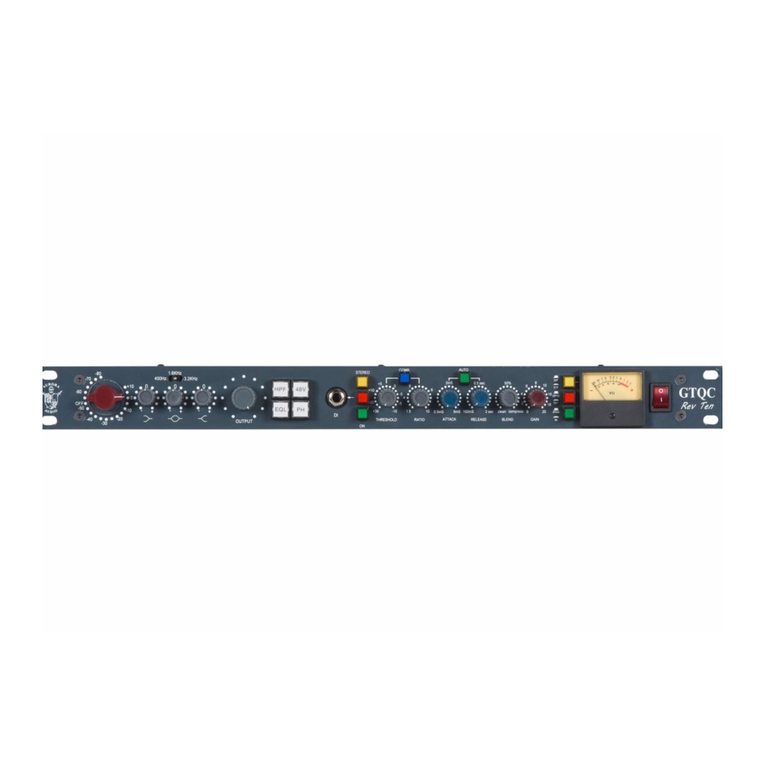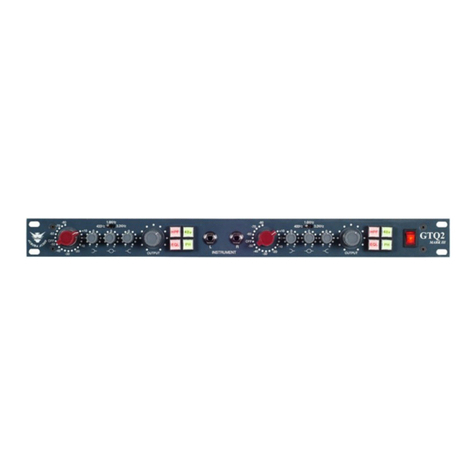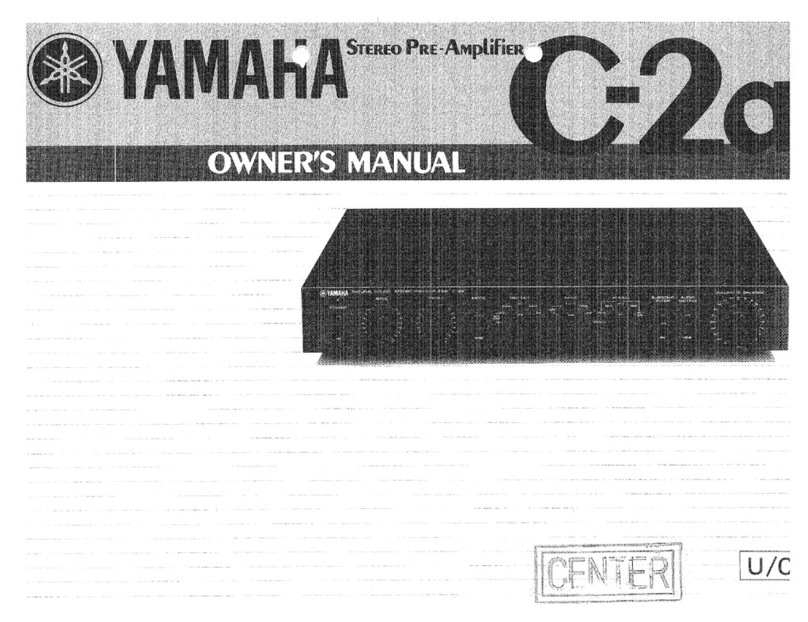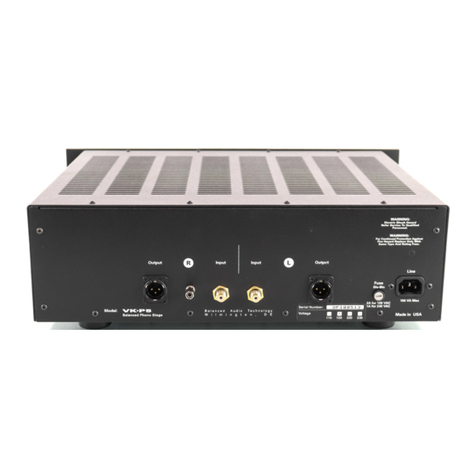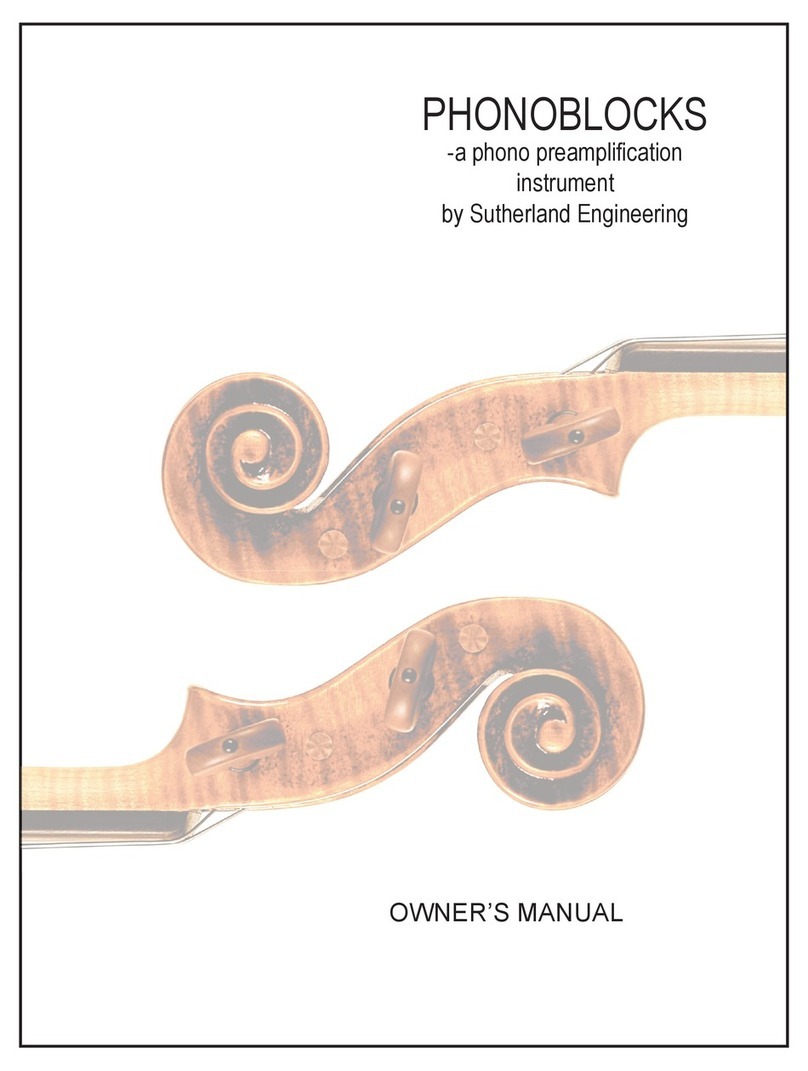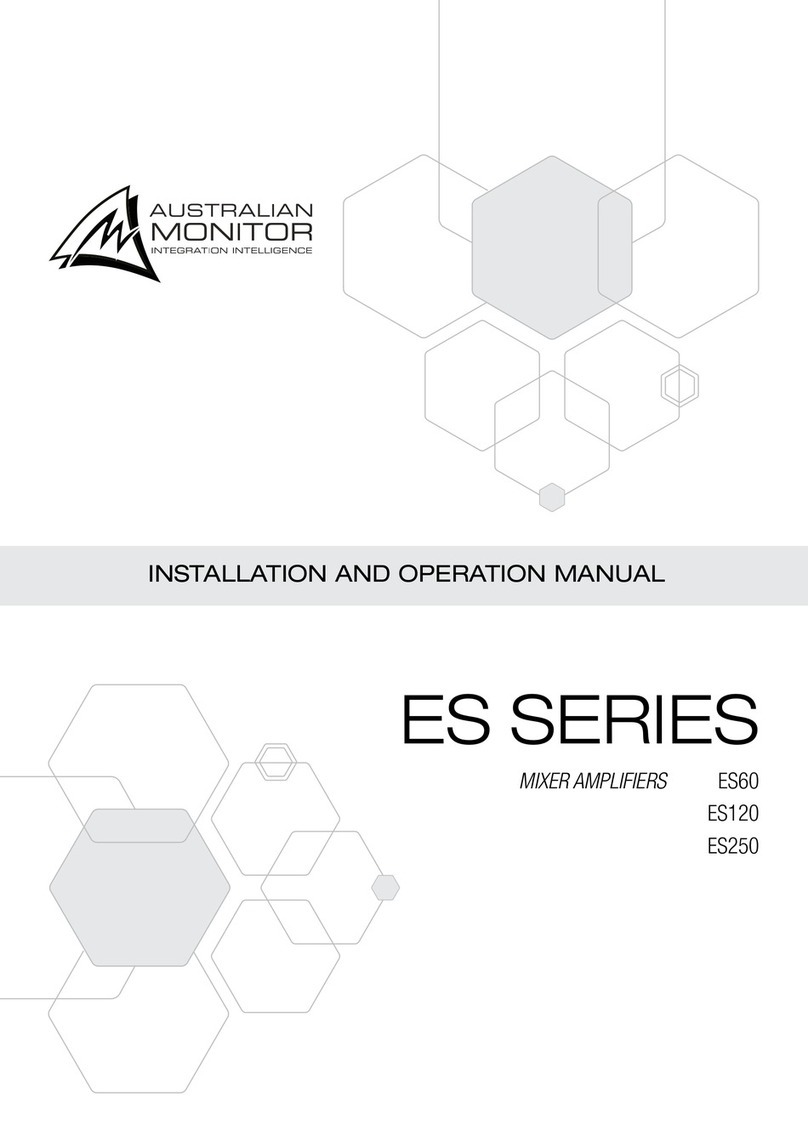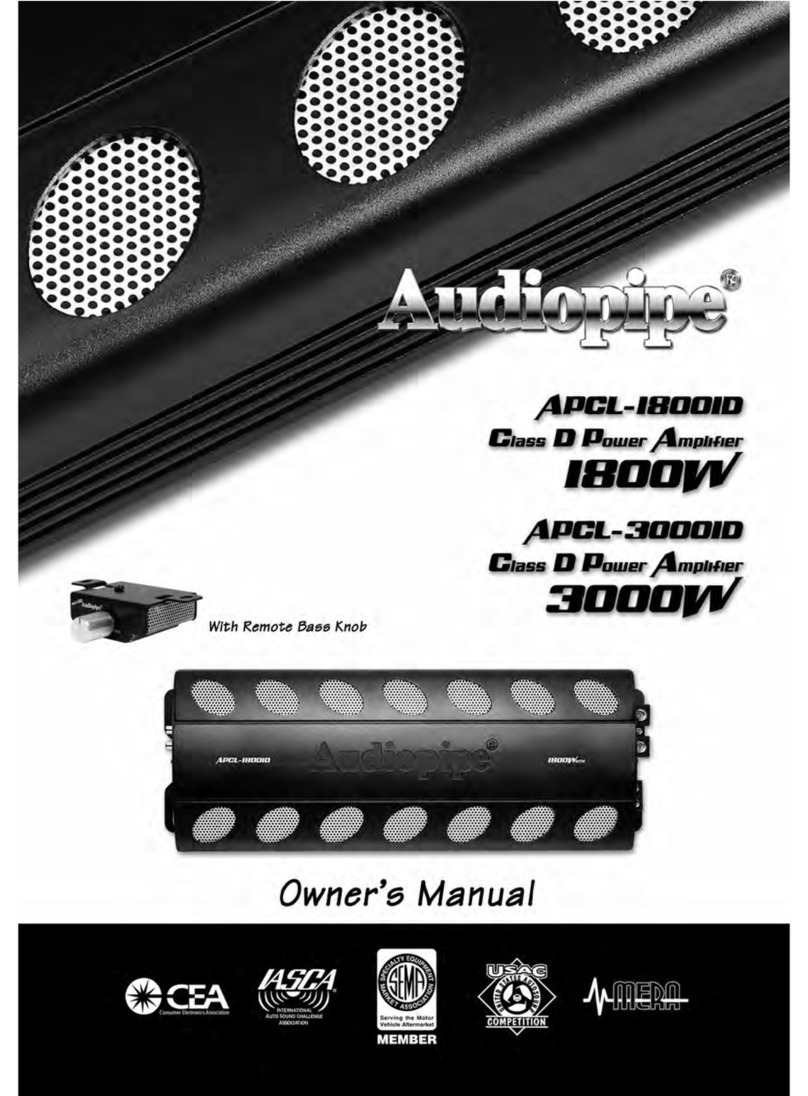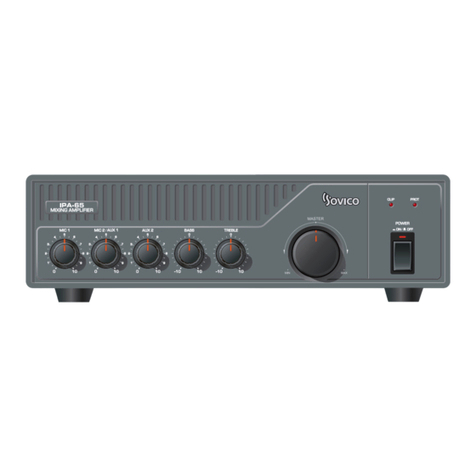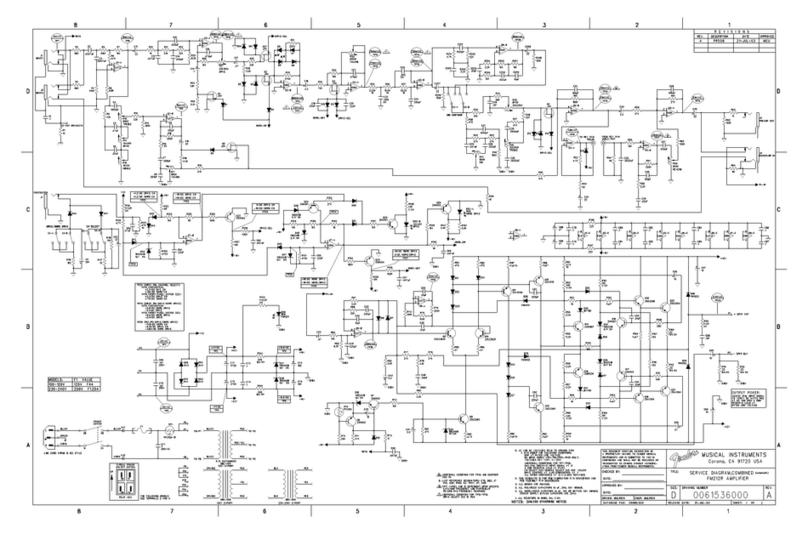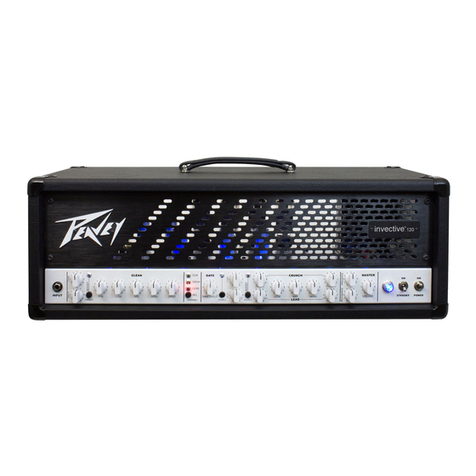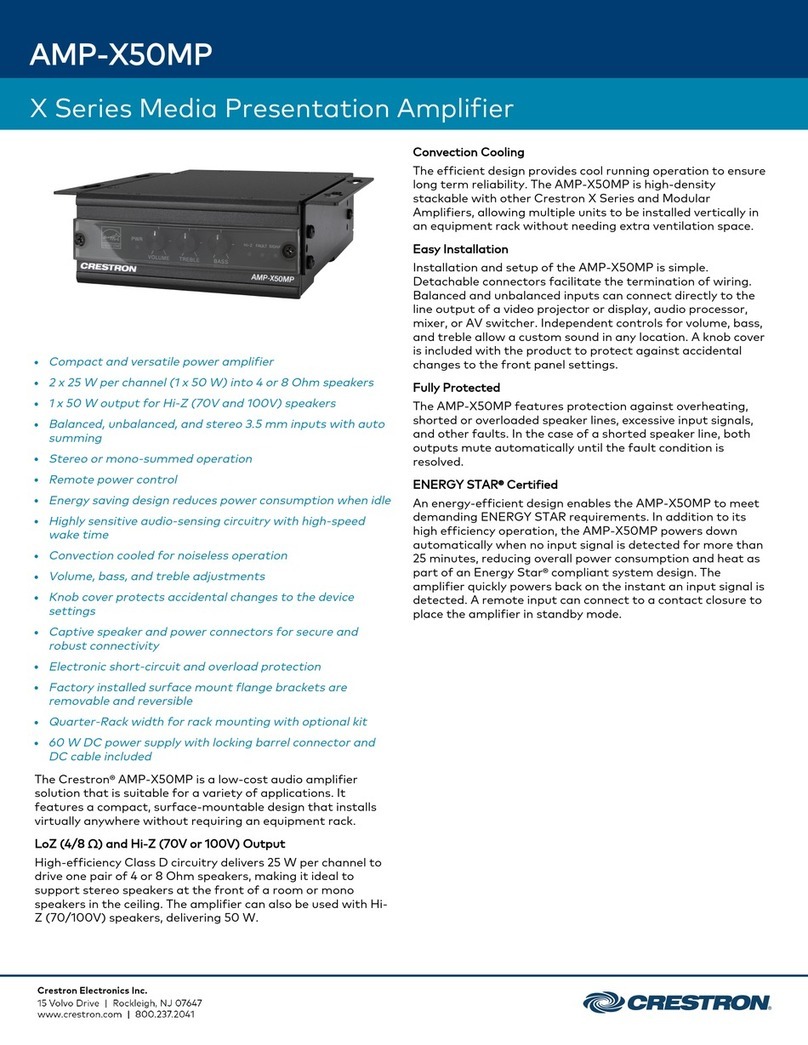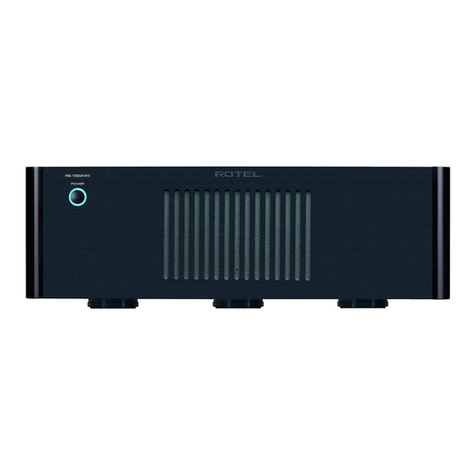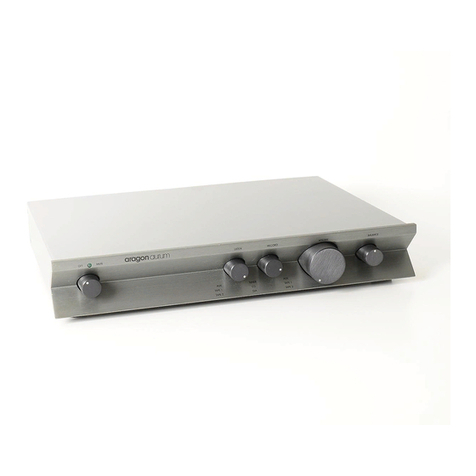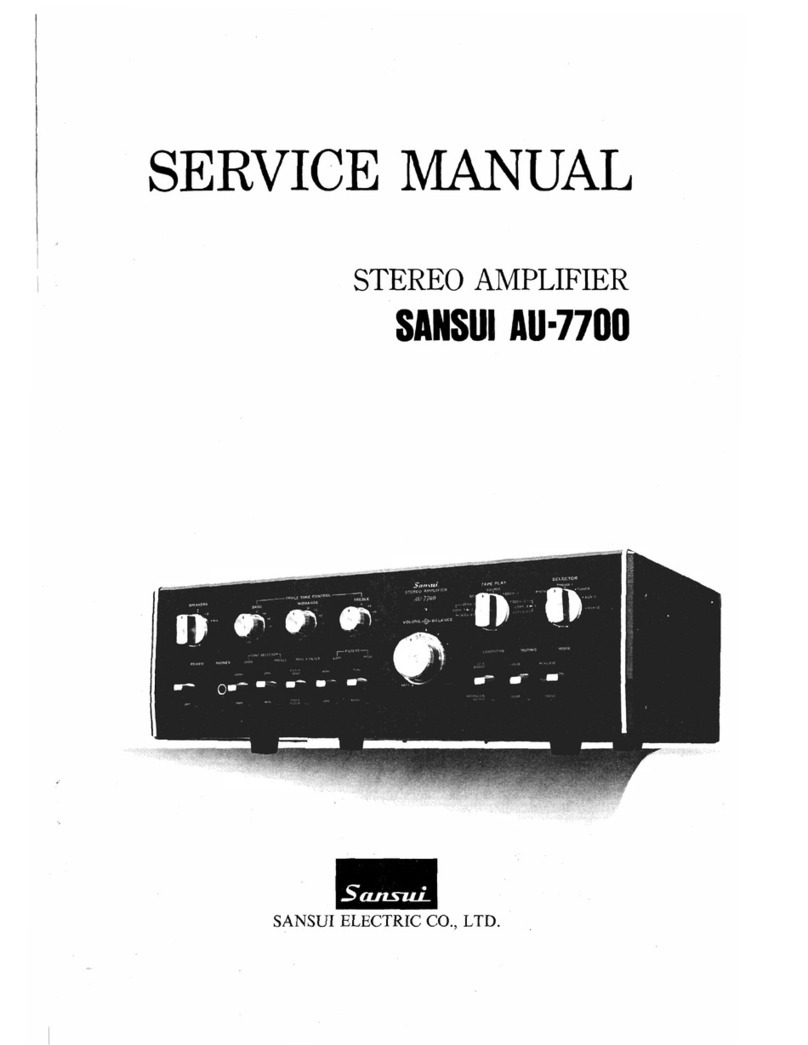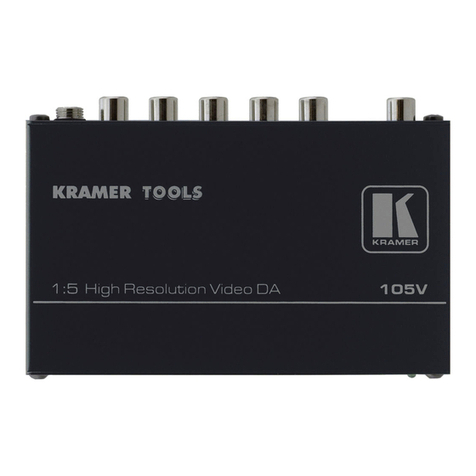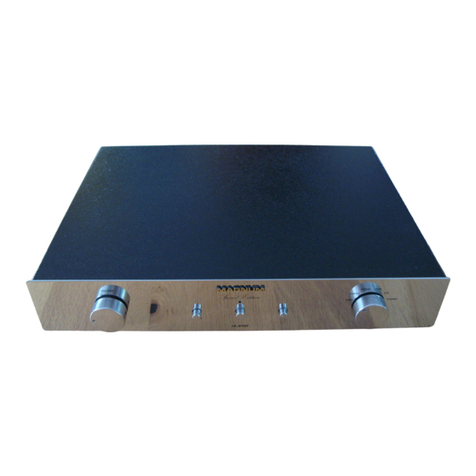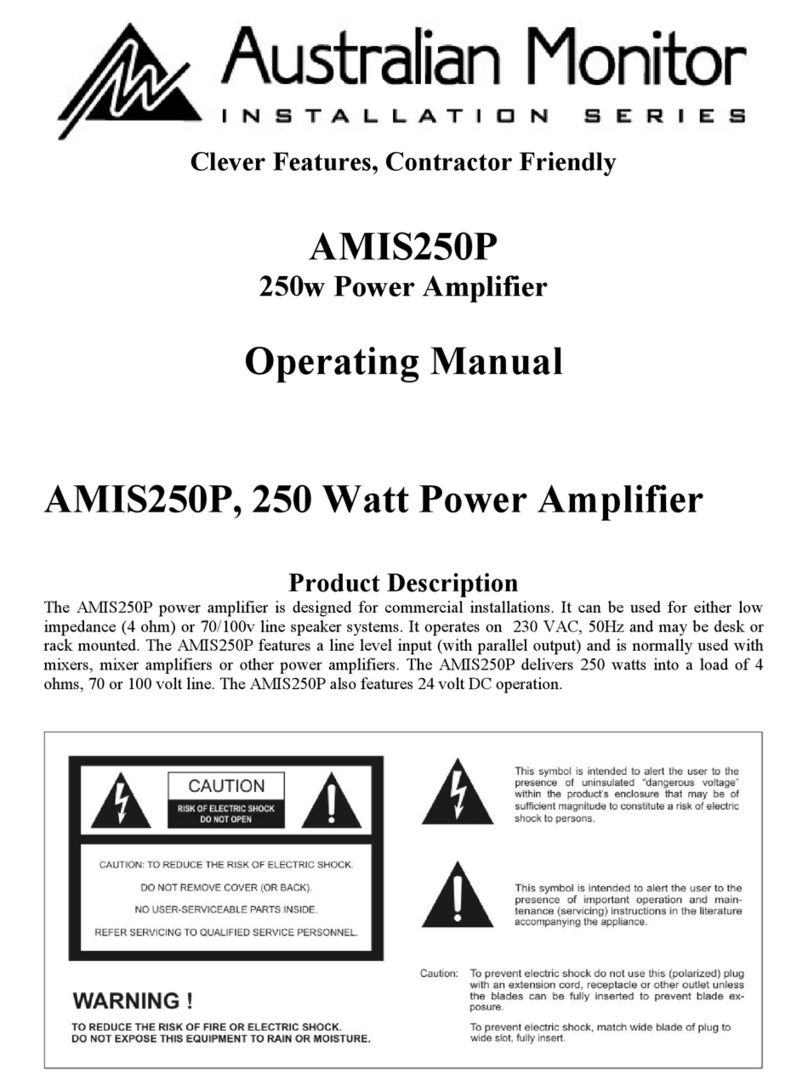Aurora Audio GTP8 User manual

AURORA AUDIO INTERNATIONAL
1520 NORTH CAHUENGA BOULEVARD
HOLLYWOOD, CA90028
EMAIL: Info@ uror udio.net Telephone: 323 462 6136
Web Site: http://www. uror udio.net F x : 323 462 6137
GTP8 Instruction Sheet
Introduction:
Well done for purchasing a hand-built, all discrete class A circuitry GTP8 eight channel microphone
pre-amplifier! It is designed to give you years of superb sounds and service
Unpacking Instructions:
Carefully remove the unit and power supply from the custom foam packing The power supply
automatically senses your local power voltage and can work between 85v and 265v For best noise
performance always use a grounded 3 core / 3 pin a c cord
If you connect the GTP8 to an unbalanced destination, wire to the XLR pins 2 and 3 only Leave pin 1
high This will help prevent ground loops
The rear jack sockets are an unbalanced insertion at around -15dBu level
Operating Guide:
The GTP8 can accommodate any signal you care to throw at it, including high-level line inputs The
sensitivity switch provides gain adjustment in 10dB steps from +80dB to –10dB and the +/- 5dB level
pot allows for fine adjustments of level and also extends the gain range from +85dB down to -15dB
The GTP8 does not have an output fader as it is anticipated to be used with the channel fader either in
the GTM822 console or the digital workstation the unit is connected to
It is possible to fit an external fader to the GTP8 by using the rear panel channel insertion jacks A
10Kohm audio taper fader could be connected as follows :-
Fader top = tip
Fader wiper = ring
Fader bottom = sleeve
The channel insertion jacks are intended to be used with our 8 channel 4 band Equalizer and is not
suitable for connecting to an external patch bay

The D I input has 10 Megohm input impedance and around 10dB gain It can be used (to great effect)
with musical instrument pickups, but works equally well with high-level signals like a D A T or CD
player If you insert a jack into the front jack socket it will automatically disable the signal from the rear
panel XLR
Illuminated switches are fitted to select phase reverse and 48v phantom power
Using analogue equipment in a digital world!
E G Analogue versus Digital levels
In my technical/design background in analogue circuitry, spanning over 30 years, the levels of audio
were calibrated in dBm, a throwback from the telephone and communications era where 0dBm was
1mW dissipated into a 600 ohm load = 0 775 volts 0dBm was later changed for the more convenient
0dBu which is a voltage into any specified impedance
In a broadcast studio, Peak Program Meters were used that were calibrated from 2 to 7 Mark #4
equated to 0dBu and Mark #6 equated to +4dBu The level +4dBu is 1 228 volts a c and also the 0VU
reference point on a VU meter This is, coincidentally, #6 on the PPM meter and a typical line up level
for an analogue tape machine
Most consoles and pre-amplifiers have a maximum output level before clipping of around 26dBu This
gives them 22dB headroom above 0VU = +4dBu Driving the console and pre-amplifier “hotter” than
+4dBu output reduces the headroom proportionately
At the other end of the scale, the consoles/pre-amplifiers usually have +80dB gain and produce noise
figures in the –45 to –48dBu region and an Equivalent Input Noise of -125 to -128dBu The noise floor
from a 200 ohm source at 20 degrees C is –129dBu so the amplifier is adding 1dB of noise to the
absolute noise floor As the gain is reduced, the difference between the signal and the noise floor
widens as the noise is pushed further down
Reminder:- Increasing the gain amplifies the signal AND raises the noise floor.
Running the device at hotter levels than usual reduces the headroom
In the digital world measurement criteria differ Instead of using a reference level that relates to a
particular power or voltage (like 0dBm) the 0dBf reference is the maximum signal that the analogue to
digital converter can accept before the onset of clipping
The 0dBf level is usually somewhere in the region of +18dBu to +24dBu in the analogue world… It is
NOT the same as 0VU (+4dBu) on an analogue VU meter
It’s very important to use an A to D input level that maximizes the headroom and minimizes the noise
in the analogue world
E.G. If an attempt was made to drive the console or preamplifier high enough to hit the 0dBf
(+2 dBu) reference level on the A to D, the amplifier would be running at over 20dB greater than
it’s normal operating level. This raises the noise floor by 20dB (ten times louder) and reduces the
analogue headroom to around 2dB. A microphone normally needing 0dB gain would need 60dB
gain and any peaks would drive both the pre-amplifier and the A to D into clipping. Not good!

Depending on the reference level recommendations of the A to D manufacturer, the analogue levels on
its input should be typically around –18dBf This will optimize both the signal to noise ratio and the
headroom of the analogue signal A degree of variance, say –16dBf, is acceptable but higher levels will
begin to degrade the analogue performance with no improvement to the quality of the sound
arranty: ONE YEAR PARTS AND LABOR LIMITED WARRANTY
Aurora Audio International warrants this GTP8 unit against defects in workmanship for a period of one
year and parts for a period of one year from receipt by the original end user This warranty shall not
apply to damage resulting from misuse including water damage, in-transit damage, fire damage,
improper maintenance, dropping the unit and operation or storage outside the environmental
specification for the product
Do not try to repair this GTP8 Only qualified Aurora Audio International technicians are authorized to
repair this unit WARRANTY VOID IF CASE IS OPENED
ROHS Directives
The RoHS Directive stands for "the restriction of the use of certain hazardous substances in electrical
and electronic equipment" This Directive bans the placing on the EU market of new electrical and
electronic equipment containing more than agreed levels of lead, cadmium, mercury, hexavalent
chromium, polybrominated biphenyl (PBB) and polybrominated diphenyl ether (PBDE) flame
retardants
The restrictions took effect in the E U from 1st July 2006
It is very important that the owner of any piece of equipment that contains even microscopic amounts
of the listed hazardous substances (in relation to the weight of the unit) realize that the responsibility of
its disposal rests with them The unit should not just be thrown away at the end of its lifetime, whether
that's 10, 20 or 30 years hence
Please contact us at the address below and we will provide you with the necessary information to return
the unit to us for proper disposal
Aurora Audio, 1520 North Cahuenga Boulevard, Hollywood CA90028
Phone +1 323 462 6136 Fax +1 323 462 6137
Email info@auroraaudio net eb URL www auroraaudio net
Table of contents
Other Aurora Audio Amplifier manuals
